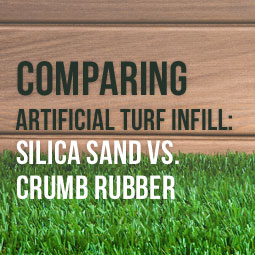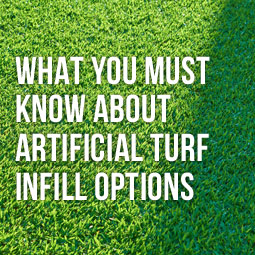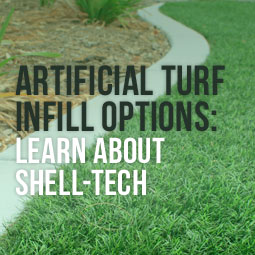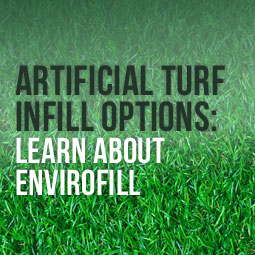 An important part of artificial turf. The infill settles into the turf and supports the blades keeping them erect and protecting the mesh fabric that holds everything together. There are different kinds of infill that are commonly used for specific reasons. Some types of infill will work better for playgrounds and athletic fields, while others are more suited for lawns and golf courses. Once you choose your turf, carefully go through the options that are offered when it comes to infill. Silica sand and crumb rubber are two of the most common, but there are blends that can also be used.
An important part of artificial turf. The infill settles into the turf and supports the blades keeping them erect and protecting the mesh fabric that holds everything together. There are different kinds of infill that are commonly used for specific reasons. Some types of infill will work better for playgrounds and athletic fields, while others are more suited for lawns and golf courses. Once you choose your turf, carefully go through the options that are offered when it comes to infill. Silica sand and crumb rubber are two of the most common, but there are blends that can also be used.
Silica Sand
Silica sand comes in both round and subangular shapes. Both are extremely affordable and are quite efficient at keeping the blades of grass in position. The main difference between round granules and subangular shaped silica is that the subangular form will gradually break down over time, while the round granules maintain their shape for several years. Silica's small size allows it to settle deep into the mesh and provide firm support making the turf feel more like natural grass and soil. Several hundred pounds of sand are required to stabilize and support an average size lawn.
Sand/Stone Combination
Because of sand's size it is sometimes mixed with pea gravel or small stone to help prevent it from becoming hard packed. It can also be mixed with finely cut, crumb rubber to create a firm, but shock absorbent surface that is ideal for playgrounds and certain types of athletic fields. Using a combination offers the benefits of both materials and can result in a happy medium if two different types of infill are being considered. Silica sand has been known to hold odors and become compacted if only sand is used. Combining it with another material such as synthetic sand, crumb rubber or pea gravel helps to prevent it from breaking down or becoming pressed down.
Crumb Rubber
Crumb rubber is created from old tires that are set to be recycled. At one time, people questioned there use as infill for artificial turf, but studies have proven that it is safe for both the environment and children when used in lawns and recreational areas. Crumb rubber infill saves thousands of tires each year from being sent to landfills. It is affordable and works extremely well in playgrounds and other recreational areas. It can easily be combined with sand to create a durable, long lasting infill that will prevent the sand from packing together or holding odors. For heavy traffic areas, it prevents the grass from being packed down by offering firmer support. It also helps by absorbing the shock of constant footsteps.
Choosing the actual turf is just the first step of the process. Once the turf has been installed, the infill you choose will be applied and maneuvered around to ensure it fills in all of the empty spaces. Raking the infill over the turf as it is being dispersed will help it settle evenly. Different types of infill will spread more evenly than others. Sand for example will settle deeply into the turf, while crumb rubber will not settle as much, but will offer stronger support and more cushion with each step. Knowing what the area will be used for is the key to choosing the right type of infill. Take the time to do some in depth research on each type of infill and what each one is good for. If you still have questions, talk to the landscaping company that will be installing the turf. They will be able to answer your questions and give you sound advice as to what kind of turf will best suit your needs.











